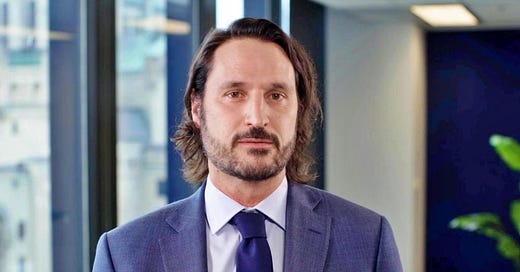The Rise and Reckoning of Dawson Partners in Private Equity Financing
Yann Robard’s entry into private equity financing brought a transformative approach to an industry known for its rigidity. Through Dawson Partners, he pioneered a method to offer liquidity to investors locked into illiquid private equity stakes, addressing a long-standing pain point for institutions like pensions and fund managers. By converting these illiquid assets into immediately accessible capital, Dawson capitalized on a booming private equity market that continues to exceed $1 trillion. However, the ambitious growth strategy and the inherent complexity of its financing structures are now being tested as economic conditions tighten and investor scrutiny intensifies.
At the core of Dawson’s model is its focus on liquidity through structured finance mechanisms. By acquiring stakes in private equity funds and bundling them into instruments that offer prioritized cash flows, Dawson positioned itself as a lifeline for investors requiring capital without prematurely offloading their positions. This strategy, particularly appealing during periods of low interest rates and abundant liquidity, allowed Dawson to scale rapidly. It amassed billions in assets under management while promoting itself as an innovator in the space.
However, Dawson’s structure relies on a critical premise, that the underlying assets will perform sufficiently to generate consistent returns across its layered investment tranches. Dawson retains the safer “preferred equity” portions of these instruments while selling higher-risk components to other investors, a practice that has drawn criticism for misaligned incentives. When assets underperform, as seen in cases like the Brightline railway, cracks begin to appear. Brightline’s mounting debt and operational inefficiencies have dragged Dawson’s inaugural fund into the bottom quartile of its peers, illustrating the vulnerability of this model when economic tailwinds dissipate.
The firm’s rapid expansion—quadrupling its workforce in just four years and setting a goal of managing $100 billion in assets—has also raised concerns among investors. The pace of growth and the sheer scale of Dawson’s ambitions have prompted some of its earliest and most prominent backers, such as the Alaska Permanent Fund and other institutional investors, to withhold commitments to its newest fund. The reasons for their hesitation are clear: Dawson’s returns have declined, and the structural complexity of its offerings has made some investors wary of whether the firm’s interests align fully with theirs.
Dawson’s exposure to underperforming assets further compounds these concerns. Investments such as Xplore Inc., which required recapitalization after a missed interest payment, and Hoonigan, a bankrupt tiremaker, reveal the limits of diversification in mitigating risk. While Dawson has exposure to thousands of companies, individual failures highlight the broader pressures on businesses backed by private equity, especially in an environment of rising interest rates and tightening credit conditions.
Despite these issues, Dawson continues to push for innovation. The firm has expanded into collateralized fund obligations and sought to cater to high-net-worth individuals while exploring significant new deals, including a $900 million transaction with a U.S.-based asset manager. These efforts demonstrate a commitment to broadening its reach and evolving its offerings. Yet, the underlying question remains whether its foundational strategy of financial engineering can sustain long-term stability and investor confidence in a volatile and increasingly scrutinized market.




